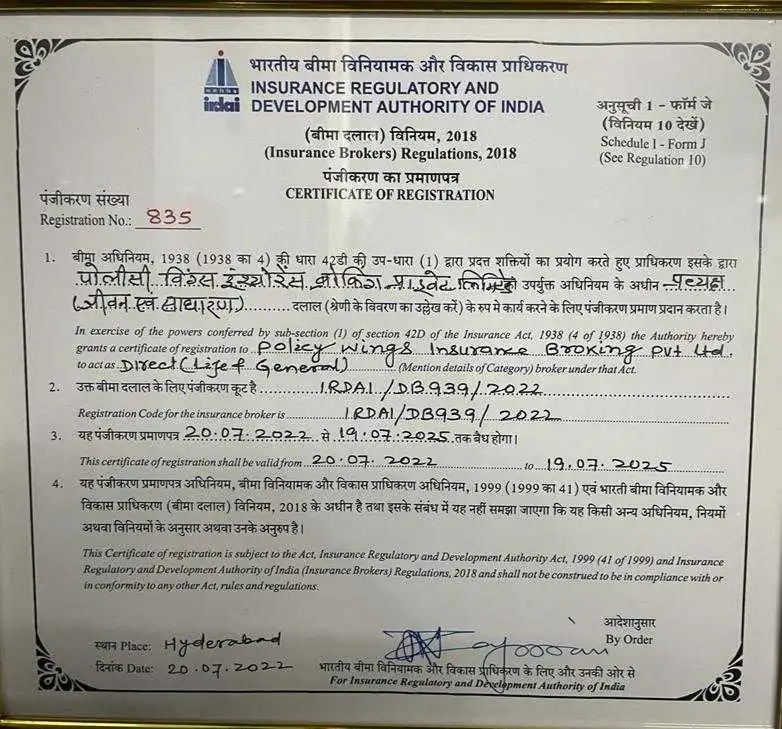How Health Insurance Works in India?

Health insurance is a vital aspect of modern life, providing financial protection against the high costs of medical care. While it may seem complicated at first glance, understanding how health insurance works is essential for making informed decisions about your healthcare coverage. In this comprehensive article, we will discuss the workings of health insurance, demystifying the terms, concepts, and processes involved.
What is Health Insurance?
Health insurance is a contractual agreement between an individual or a group and an insurance company. In exchange for regular premium payments, the insurer provides coverage for a range of medical expenses. These expenses can include doctor’s visits, hospital stays, prescription drugs, preventive care, and more, depending on the specific policy.
Types of Health Insurance Plans
There are several types of health insurance plans, each with its own features and benefits:
- Health Maintenance Organization (HMO): HMO plans require members to choose a primary care physician (PCP) and obtain referrals to see specialists. They often have lower premiums but limited network coverage.
- Preferred Provider Organization (PPO): PPO plans offer more flexibility in choosing healthcare providers and do not require referrals to see specialists. However, out-of-network care typically costs more.
- Exclusive Provider Organization (EPO): EPO plans combine elements of both HMOs and PPOs. They have a network of preferred providers but may provide limited coverage for out-of-network care.
- Point of Service (POS): POS plans also have a primary care physician requirement and referrals for specialists, similar to HMOs. They offer more coverage for out-of-network care but at a higher cost.
- High Deductible Health Plan (HDHP): HDHPs come with higher deductibles and lower premiums. They are often paired with Health Savings Accounts (HSAs), allowing individuals to save money tax-free for medical expenses.
- Medicare and Medicaid: These government-funded programs provide health insurance to eligible individuals. Medicare is primarily for seniors and some disabled individuals, while Medicaid serves low-income individuals and families.
Premiums, Deductibles, and Copayments
To understand how health insurance works, it’s crucial to grasp the key financial terms associated with it:
- Premiums: Premiums are the regular payments you make to your insurance company to maintain coverage. They can be paid monthly, quarterly, or annually and are usually a fixed amount.
- Deductibles: The deductible is the amount you must pay out of pocket for covered services before your insurance plan starts to pay. For example, if you have a $1,000 deductible and receive a $500 medical bill, you must pay the full $500 until you reach your deductible.
- Copayments and Coinsurance: Copayments are fixed amounts you pay for specific services, such as a $30 copayment for a doctor’s visit. Coinsurance, on the other hand, is a percentage of the cost you share with your insurer after meeting your deductible. For instance, if your plan has 20% coinsurance, you pay 20% of covered costs, and your insurer covers the remaining 80%.
The Role of Health Insurance Providers
Health insurance companies play a vital role in the healthcare system. They act as intermediaries between healthcare providers and policyholders. Here’s how they function:
- Provider Networks: Insurance companies establish networks of healthcare providers, including doctors, hospitals, and clinics. In-network providers have negotiated contracts with the insurer, which often leads to lower costs for policyholders.
- Claim Processing: When you receive medical care, your healthcare provider sends a bill to your insurer. The insurer reviews the bill, applies the terms of your policy (deductibles, copayments, and coinsurance), and pays the provider accordingly.
- Preauthorization: Some medical procedures or treatments may require preauthorization from your insurer to ensure they are medically necessary. Failing to obtain preauthorization can result in denied claims.
- Customer Support: Health insurance companies provide customer support to policyholders, helping them understand their coverage, find in-network providers, and resolve billing issues.
How Health Insurance Works Step by Step
Understanding the step-by-step process of how health insurance works can demystify the complexities:
- Enrolling in a Plan: You select a health insurance plan that suits your needs and budget. This involves choosing a plan type, coverage level, and provider network.
- Paying Premiums: You pay your insurance premiums regularly, typically on a monthly basis.
- Seeking Medical Care: When you need medical care, you visit a healthcare provider within your plan’s network. If you see an out-of-network provider, you may have higher costs.
- Meeting Your Deductible: If your plan has a deductible, you pay for covered services until you reach that amount.
- Copayments and Coinsurance: For each covered service, you pay copayments or coinsurance as specified in your policy.
- Claim Submission: Your healthcare provider submits a claim to your insurance company, detailing the services provided and their cost.
- Claim Processing: Your insurer reviews the claim, applies deductibles, copayments, and coinsurance, and pays its portion directly to the provider.
- Explanation of Benefits (EOB): You receive an EOB from your insurer explaining the charges, payments, and your remaining financial responsibility.
- Paying Your Share: You are responsible for paying any remaining balance to the healthcare provider.
Common Health Insurance Terminology
To navigate the world of health insurance effectively, familiarize yourself with these essential terms:
- Premium: The amount you pay for your insurance coverage.
- Deductible: The initial out-of-pocket amount you must pay before insurance coverage kicks in.
- Copayment: A fixed fee you pay for specific services.
- Coinsurance: The percentage of costs you share with your insurer after meeting your deductible.
- Network: A group of healthcare providers contracted with your insurer.
- Out-of-Network: Healthcare providers who do not have contracts with your insurer.
- In-Network: Healthcare providers who have contracts with your insurer, often resulting in lower costs.
- Preauthorization: Approval from your insurer for certain medical procedures or treatments.
- Explanation of Benefits (EOB): A document from your insurer explaining the charges, payments, and your financial responsibility for a claim.
Choosing the Right Plan
Selecting the right health insurance plan is crucial to ensure you have adequate coverage while managing costs. Consider the following factors:
- Your Health Needs: Evaluate your current health and anticipate any potential needs, such as prescription medications, chronic conditions, or planned surgeries.
- Premiums vs. Deductibles: Balancing lower premiums with higher deductibles can save you money if you are generally healthy and do not require frequent medical care.
- Provider Network: Check if your preferred doctors and hospitals are in-network to avoid higher out-of-pocket costs.
- Coverage Types: Consider the specific services covered by each plan, including preventive care, maternity, mental health, and dental or vision services.
- Prescription Coverage: If you take medications regularly, ensure the plan covers your prescriptions.
- Maximum Out-of-Pocket Costs: Review the plan’s maximum out-of-pocket limits to understand your potential worst-case financial scenario.
- Policy Limits: Be aware of any policy limits on certain services or treatments.
Utilizing Preventive Care
Most health insurance plans emphasize preventive care to maintain overall health and reduce long-term healthcare costs. This can include regular check-ups, vaccinations, screenings, and wellness programs. Preventive services are often covered at no cost to the policyholder, meaning no copayments or deductibles are required.
Special Considerations
Certain life events can impact your health insurance coverage, such as marriage, divorce, childbirth, or job changes. In these situations, you may have the opportunity to enroll in a new health insurance plan or make changes to your existing coverage during open enrollment periods or through special enrollment periods.
Additionally, some individuals may qualify for government assistance programs like Medicaid or the Children’s Health Insurance Program (CHIP) if they meet income and eligibility criteria.
Wrapping Up
Health insurance is a complex but essential aspect of our lives, providing financial protection against the high costs of medical care. Understanding how health insurance works empowers individuals to make informed decisions about their coverage, select the right plan for their needs, and navigate the healthcare system effectively. By mastering the terminology, processes, and considerations outlined in this article, you can take control of your healthcare and ensure your well-being and financial security in the face of medical expenses.
Related Posts
FAQs
Health insurance is a contract between you and an insurance company that provides coverage for various medical expenses. You need it to protect yourself from the high costs of healthcare, ensure access to necessary medical services, and achieve financial security in the event of illness or injury.
Choosing the right health insurance plan involves assessing your healthcare needs, considering your budget, and examining factors like premiums, deductibles, provider networks, and coverage types. It’s essential to carefully compare different plans to find one that suits your specific circumstances.
- Premium: The amount you pay for your health insurance coverage, typically on a monthly basis.
- Deductible: The initial out-of-pocket amount you must pay for covered services before insurance coverage starts.
- Copayment: A fixed fee you pay for specific healthcare services.
- Coinsurance: The percentage of healthcare costs you share with your insurer after meeting your deductible.
It depends on whether your doctor is in-network or out-of-network. In-network providers have contracts with your insurer, often resulting in lower costs for you. Check the provider network of your chosen plan to see if your doctor is included.
An HSA is a tax-advantaged savings account linked to a high deductible health plan (HDHP). You can contribute pre-tax dollars to the HSA, and the funds can be used for qualified medical expenses. HSAs offer tax benefits and can help you save for future healthcare costs.











